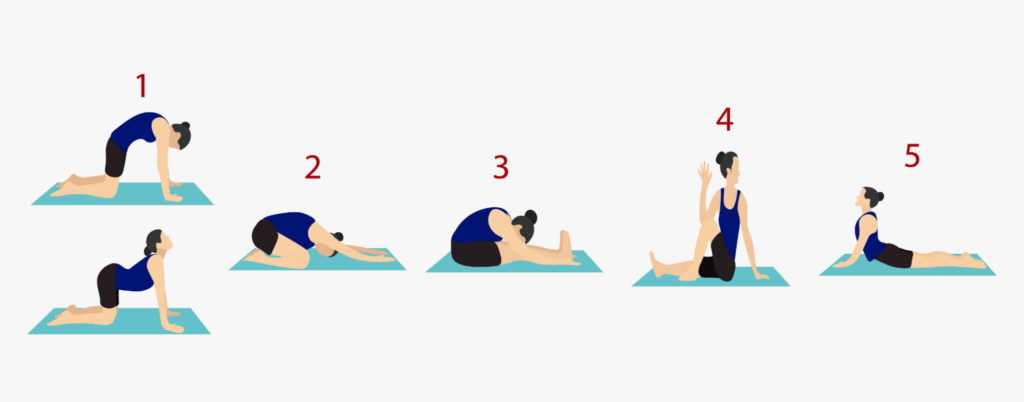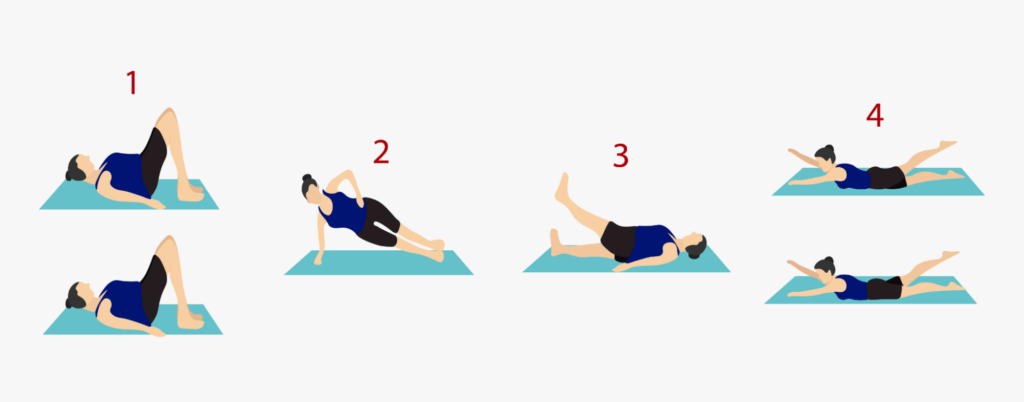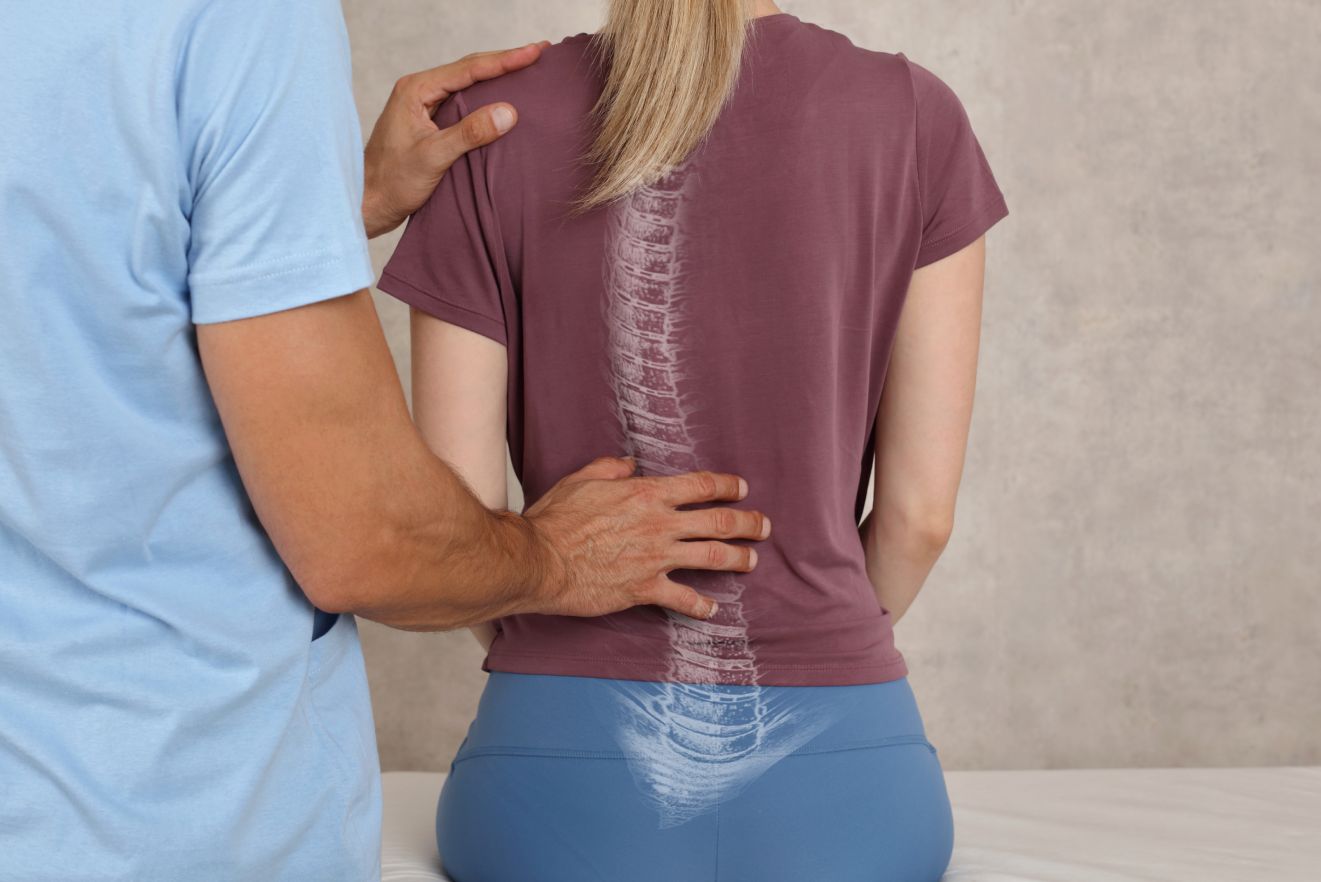How Scoliosis Exercises And Ergonomics Help Achieve A Healthy Spine
Published on December 13, 2023
Scoliosis is a condition characterized by a lateral curvature of the spine. Beyond being a mere physical condition, scoliosis significantly influences overall well-being, emphasizing the need for comprehensive strategies. Exercises and ergonomics contribute to spinal health for the effective management of scoliosis.
Importance Of Engaging In Exercises For Scoliosis
In dealing with scoliosis, doing certain exercises can really help. These exercises bring more than just physical benefits—they also make a big difference in how you feel overall. We’ll look at specific exercise plans made just for scoliosis. These exercises mainly focus on making your core stronger and improving flexibility. By doing these exercises, we aim to not only manage the curve in your spine but also make sure you feel better in general.
Stretching Exercises

Stretching involves lengthening muscles for improved flexibility and joint health, aiding in injury prevention and muscle coordination.
1. Cat-Cow Stretch
- Start on hands and knees.
- Arch your back upward (cat) and then dip it down (cow).
- Repeat in a flowing motion.
2. Child’s Pose
- Kneel on the floor, sit back on your heels, and extend arms forward.
- Lower your chest towards the floor, stretching your spine.
3. Seated Forward Bend
- Sit with legs extended in front.
- Hinge at your hips to reach towards your toes.
4. Spinal Twist
- Sit or lie down, cross one leg over the other, and twist your torso in the opposite direction.
- Repeat on the other side.
5. Cobra Stretch
- Lie on your stomach, place hands under shoulders, and lift your upper body, arching your back.
Strengthening Exercises
These exercises focus on building muscle strength and endurance, enhancing overall performance, and supporting joint stability.

1. Pelvic Tilts
- Lie on your back with knees bent.
- Tighten your abdominal muscles and gently tilt your pelvis, engaging your core.
2. Side Planks
- Lie on your side and lift your body, balancing on your forearm and side of your foot.
3. Leg Raises
- Lie on your stomach and lift one leg at a time, engaging your lower back muscles.
4. Swimming Exercise
- While lying on your stomach, lift opposite arm and leg simultaneously, alternating sides.
Tailored Exercise Programs
Tailored exercise programs to strengthen core muscles and improve posture.
The non-commutative property of finite rotation angles has implications for understanding the biomechanics of the spine, especially when considering exercises aimed at reducing the angles of spinal curves, such as those associated with scoliosis.
In the context of the spine and exercises for scoliosis, the non-commutative property is relevant because the order in which exercises are performed can influence the outcomes. Scoliosis involves a three-dimensional deviation of the spine, and exercises are often designed to address this multi-planar deformity.
Let’s break down how the non-commutative property may be relevant:
- Order Of Exercises: When designing exercises for scoliosis, healthcare professionals often consider the specific curvature of the spine in different planes (sagittal, frontal, and transverse). The order in which exercises are prescribed can impact the overall impact on the spine.
- Multi-Planar Deformity: Scoliosis is a complex condition with deformities in multiple planes. The spine may have lateral curvature (frontal plane), rotation (transverse plane), and alterations in its natural curves (sagittal plane). Exercises need to address these aspects comprehensively.
- Finite Rotations: In the context of exercises, the rotations involved are finite, meaning they have a specific magnitude. The non-commutative property states that the sequence of exercises matters—rotating the spine first in one direction and then in another may yield different results compared to the reverse order.
- Exercise Programming: Healthcare professionals often prescribe a combination of exercises to address spinal deformities. These exercises might include stretching, strengthening, and postural correction activities. The order and progression of these exercises are carefully considered to optimize their impact on the spine.
- Individualized Approach: The non-commutative property emphasizes the need for an individualized approach to scoliosis exercises. Each patient’s spinal curvature is unique, and exercises should be tailored to address their specific condition, taking into account the three-dimensional nature of the deformity.
In summary, when designing exercises for scoliosis with the goal of reducing the angles of spinal curves, healthcare professionals consider the non-commutative property. The order and combination of exercises are crucial to achieving optimal results, as the biomechanics of the spine are influenced by the specific sequence of movements and rotations. This underscores the importance of personalized exercise programs and the expertise of healthcare professionals in scoliosis management.
Impact Of Proper Ergonomics In Elevating Spinal Health
Ergonomics serves as a fundamental pillar in fostering spinal wellness, encapsulating the art of creating environments and habits that align with the natural curvature of the spine. It becomes a guiding principle in how we navigate daily activities, from sitting at a desk to engaging in physical tasks.
Individuals can take proactive steps towards cultivating a spine-friendly lifestyle and contributing to their overall health and wellness by understanding and implementing the following ergonomic practices:
- Maintain a neutral spine while sitting.
- Use a supportive chair and keep screens at eye level.
- Take breaks for stretching and movement.
Recent
-
 Whiplash: the Invisible Injury
Whiplash: the Invisible Injury2023 December
-
 When to See a Back Pain Specialist
When to See a Back Pain Specialist2023 December
-
 What is Dry Needling?
What is Dry Needling?2023 December
Follow
Schedule Your Appointment Today
Contact us today to book a free 15-minute consultation with our Chiropractor in Highlands Ranch! We look forward to getting you on the path to optimal health and wellness.



